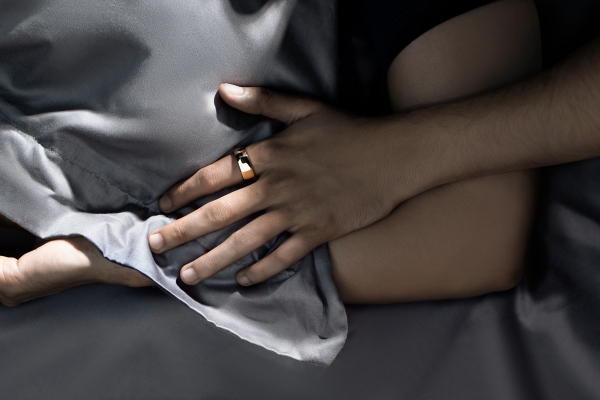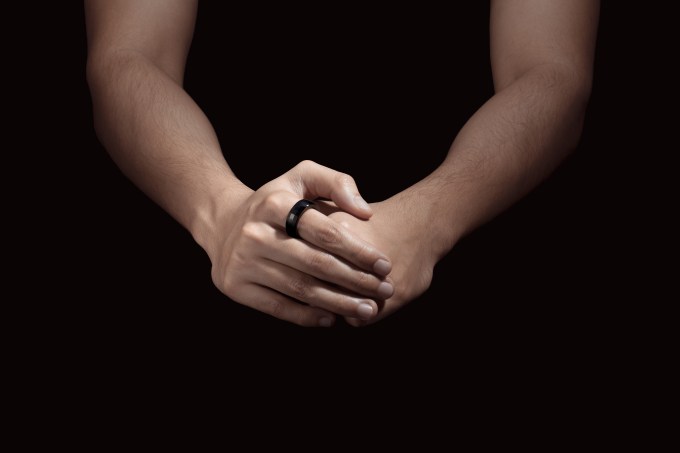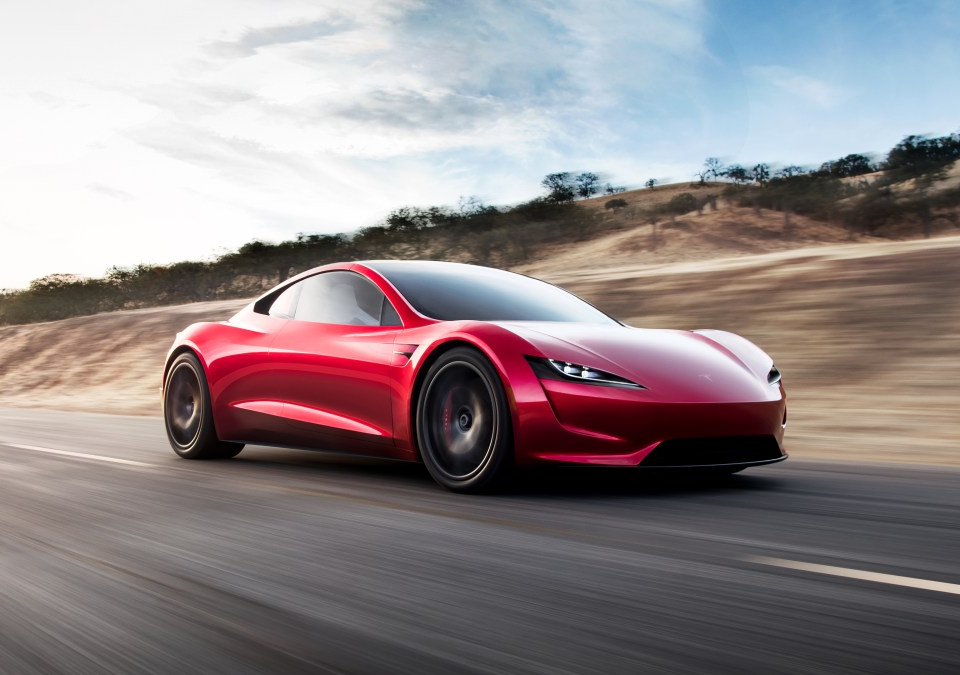
Can Polestar succeed where other EV maker SPACs have failed?
July 7, 2022
Tesla reportedly nowhere near goal of installing 1,000 solar roofs a week
July 8, 2022
Indian fitness platform Ultrahuman is expanding its wearable portfolio by launching a smart ring to boost its ability to provide tech loving ‘biohackers’ — and, it hopes, health-concerned Boomers — with more insightful metabolic insights.
Sensors embedded in the forthcoming Ultrahuman Ring include temperature, heart rate and movement monitors, which enable the device to track the wearer’s sleep quality, stress levels and activity density, per CEO and co-founder, Mohit Kumar.
The device is designed to work in conjunction with the startup’s existing wearable, a continuous glucose monitor (CGM) sensor-based service it brands ‘Cyborg’, to deepen the quality of insights for users — such as by identifying when a poor glucose response might be linked to a bad night’s sleep, say, or elevated stress levels, rather than putting all the focus on whatever it was the user ate right before their blood sugar spiked.
The Ultrahuman Ring is not a CGM itself but it can function as a standalone health tracker, according to Kumar — giving the fitness startup a shot at broadening the appeal of its metabolic tracking service since the smart ring just slips on the finger, instead of, as is the case with the CGM, requiring that a spring-loaded filament is fired into the user’s upper arm (and left in place, ‘worn’ under the skin).
The clean, chunky look of the ring band (which comes in a shiny metal titanium or black finish) is also more likely to fit in with fashion-conscious consumers than rocking a ‘Cyborg’ arm patch.
The Ultrahuman Ring goes up for pre-order today, with shipping slated to start in August.
At the time of writing pricing hasn’t been confirmed but the startup told us there will be two options: One (premium) price covering lifetime usage; and another (monthly) subscription option with a relatively small lock in period, after which the user would be free to quit on demand.
One ring to end the guesswork?
“The idea is to help you understand more about what are the additional factors in your metabolism,” say Kumar, discussing the incoming smart ring in a Zoom call with TechCrunch. “Right now today with the glucose monitor you actually understand the outcome of how glucose metabolism works but there are many other factors that affect glucose levels — factors like stress, sleep, activity. These are the major ones.”
“Today, a lot of this is actually guesswork,” he goes on. “But with our own wearable — and with the access to the raw data of the wearable — we actually have the ability now to understand what was the leading factor that led to a poorer glucose response. For example, if you’re under-recovered because of, let’s say, lack of sleep and the glucose levels get elevated the platform now can clearly figure out what is the contributing factor. And similarly for lack of activity.”
Many factors can affect how the body metabolises glucose, while big swings in blood sugar can be associated with health problems like diabetes and heart disease — creating an impetus for consumers to make lifestyle changes intended to stablize their glucose response, such as upping their activity level, choosing a healthier diet and getting enough sleep.
Ultrahuman’s metabolic fitness tracking service essentially sells real-time feedback to help individuals get a handle on what’s going on with their biology. But when we road-tested its beta product last year, we highlighted the relative challenge for the average user to intelligently interpret their glucose variability data — and link it to specific lifestyle factors — vs taking a too simplistic read of the data.
The smart ring looks intended to shrink this interpretation gap by enabling Ultrahuman’s platform to track and triangulate a variety of biomarkers to provide the user with a stronger read on what’s behind their glucose peaks and troughs. (Or: “If lack of activity is leading to elevated base levels of glucose the platform will be able to decode it in a much more efficient way,” as Kumar puts it.)
Ultrahuman will be going up against a number of more established players in the smart ring space — typically also with a strong focus on health/fitness tracking. However it argues its differentiating twist here is that it’s “optimizing for metabolism” — and, well, it has the glucose tracking data to back that up (thanks to early adopters of its CGM-based ‘Cyborg’ wearable).
“Different platforms optimize for different things. Oura, for example, optimize for sleep. Whoop provides for recovery. And here we’re optimizing for metabolism,” argues Kumar, adding that how Ultrahuman captures data (with “more real-time” sensors) is a distinctive technical element of its differentiation vs rival smart ring makers.
“The way we have built the data pointers, the frequency of data pointers, the type of metrics, real-time-ness of temperature etc, is more optimized towards the metabolism than other wearables,” he also suggests.
“For us temperature is a much more important biomarker given that we’re looking at the metabolic rate and glucose metabolism. So that was one of the reasons why we decided to build our own wearable — so that we have control over the accuracy of the insights and also the ability to derive some of these insights which was not possible with the existing class of wearables.”
According to Kumar, the Ultrahuman Ring measures stress by looking at factors like heart rate, HRV (heart rate variability) and temperature — running its own algorithmic analysis of the data to identify a per user stress response.
For activity, he says it’s aiming to identify “activity density” — by looking at input from accelerometers, as well as temperature and heart rate — to try to understand “what zone of activity were you in”.
The sleep tracking component also pulls data from activity sensors, temperature and heart rate — to identify different phases of sleep (REM, deep sleep etc).
While sensor-laden, the Ultrahuman Ring is not currently configured to deliver direct feedback at the hardware level (such as by vibrations) — but Kumar suggests that haptic nudges and/or smart alarms are something it wants to add in future.

Image Credits: Ultrahuman
Two wearables for gut insights
Ultrahuman settled on a smart ring as its choice of form factor for this second wearable, rather than — say — a smart band, for a few reasons. Firstly, it avoids the risk of having to compete with existing wrist-mounted wearables (like the Apple Watch) for space on the user’s person. But Kumar also says its testing showed that a ring form factor yielded the lowest data variability of all the forms it tested for metrics like temperature, an important consideration for accuracy.
The team also judged that a ring stands a better chance of being worn more consistently and continuously than other types of wearables. (Ultrahuman’s Ring can survive getting wet in the shower or the pool, he confirms, with also up to five days of battery life before it needs to be charged.) “The more data that the user has about themselves, the more powerful the insights will be,” he adds.
If the ring user is simultaneously wearing Ultrahuman’s CGM too, insights picked up by the ring’s sensors will be directly linked to their real-time glucose levels (which the Cyborg sensor measures via changes to the interstitial fluid under the skin of their arm) — enabling actionable connections to be made between glucose variability and lifestyle events which may be triggers (high stress, poor sleep, low activity levels etc).
“Where our strength will be is in terms of marrying things like glucose variability and impact on your sleep,” he predicts. “Or, for example, if you have a late meal and a late glucose spike — what impact did it cause on your sleep?
“For some people this is perfectly fine — they can have a late glucose spike and they’ll actually pretty much be in the [target sleep] zone. But for a lot of people it actually affects their REM sleep pretty [badly]. And in some cases it affects their deep sleep also.”
The Ultrahuman smart ring plus Cyborg CGM combo could therefore power diet-related interventions for users who can’t avoid having a late meal but for whom its metabolic tracking has implicated glucose spikes as negatively affecting their sleep quality — by suggesting, for example, they opt for certain foods that are linked to improved sleep (such as tryptophan rich foods) when they have to have a late meal.
“Those are the insights where we will actually be pretty unique,” he suggests.
The product will also approach movement and activity recommendations in a distinct way compared to rival products, per Kumar.
“Movement is not just about burning more calories — it’s also about frontal lobe development, it’s also about longevity. And movement is an activity which helps people reduce cortisol levels and at the same time increase their [high calorie] expenditure. So a lot of our focus is going to be around movement — if you look at it from an activity tracking perspective.”
A user of Ultrahuman’s smart ring who has not tapped its upper-arm-mounted CGM sensor yet can still get some general benefits, according to Kumar. But he emphasizes that the greatest utility comes from the combination of the two wearables. “People will be able to understand their sleep quality, people will be able to understand their levels of stress recovery, movement etc. But if they want to understand the effect on their glucose metabolism of all these factors they have to unlock it by a CGM. So it works both ways,” he says.
The ring can also work to bridge service gaps inevitably affecting the Cyborg sensor — and thereby expand the utility of its CGM tracking service — by continuing to provide a prior Cyborg sensor user with personalized feedback after their sensor has expired. (The arm-mounted CGMs typically last two weeks before they have to be replaced — meaning the Cyborg service is interrupting unless a fresh sensor is applied — whereas the Ultrahuman Ring is designed to stick around for longer and won’t automatically ‘expire’ in the same way.)
“[If you just have the ring] the platform will understand, based on what sort of metabolic rate, your carb processing capabilities, how much you should be walking, for example, after a meal,” explains Kumar. “And that’s possible because now we understand what sort of activity levels led towards decreasing throughputs. So that’s how — over time — we actually don’t need your CGM data also, in many scenarios, to derive this output.”
Bringing biohacking to Boomers?
Since the ring form factor is obviously more accessible vs the (semi-invasive) arm-mounted CGM, Ultrahuman is expecting greater adoption of the smart ring than for the Cyborg tracker.
He says it currently has 125,000 people in India on the wait-list for the Cyborg service — which remains in a managed beta — but it’s expecting at least 100,000 people to buy into the smart ring over the next year.
Ultrahuman will be selling the smart ring globally — whereas availability of the Cyborg sensor remains limited to India and the UAE, owing to regulatory considerations and also its decision to focus on markets with high rates of metabolic disorders for the product to target — so the pool of potential buyers is larger.
At the same time, Kumar says the team is hoping the smart ring will be able to act as a broader marketing tool to cross-sell the CGM-powered service.
The typical profile of existing Cyborg users is an individual between 30-40 years old with a passion for fitness (and/or data analysis), and an interest in preventative health. But with the smart ring expected to have broader appeal, Ultrahuman now has its eye on convincing older, Baby Boomer generation consumers to take a punt on its metabolic health service — a wider population (of circa 25 million-30 million globally) that Kumar suggests hasn’t adopted a health wearable as yet. But maybe a shiny bit ‘o’ bling could be just the nudge they need…
“Maybe they have adopted a wearable like Apple Watch because it’s not just a wearable for health — it also does a bunch of things — but they haven’t gone deep into deep health or a biohacking wearable yet. So that’s what our target audience in the future would be — but the first audience is going to be biohackers, people who love data about their health,” he adds.
This report was updated with a correction to the number of people on the waitlist for Cyborg; it’s 125,000, not 25,000 as we originally reported



